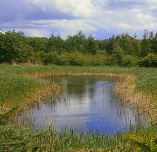
Experts from the world of sustainable drainage met at the Royal Statistical Society in London last October for a seminar hosted by susdrain.
SuDS not duds – getting the basics right reinforced the SuDS principles and provided an opportunity to share good practice on SuDS design with experts, according to susdrain – which styles itself 'the community for sustainable drainage'.
Case studies demonstrated what can be achieved and how challenges can be overcome. The presentations were of interest to those both new to SuDS and those who feel comfortable with the SuDS approach.
According to the event publicity, delegates gained:
- A better understanding of the key principles and practices behind successful delivery of SuDS
- A chance to discuss the opportunities and challenges of delivering SuDS to deliver multiple benefits with other colleagues and disciplines
- A useful insight into the contributions that different disciplines can make to good SuDS design. A civil engineer, ecologist and landscape architect will be presenting and will be available for questions and discussion
- An opportunity to discuss the different approaches to securing SuDS in line with government’s recent consultation.
Sustainable Drainage Systems (SuDS), says susdrain, provide “a fantastic opportunity to improve our places and spaces. They achieve this by managing the risk of flooding and diffuse pollution from sites as well as enhancing biodiversity and improving amenity.”
The Department for Communities and Local Government is currently holding a further consultation on the implementation of proposals to increase the provision of sustainable drainage systems. The consultation runs until 24 October.
According to DCLG: “The independent review into the causes of the 2007 floods (The Pitt Review) concluded sustainable drainage systems…were an effective way to reduce the risk of ‘flash-flooding’ which occurs when rainwater rapidly flows into the public sewerage and drainage system, causing overloading and back-up of water to the surface. Typically, sustainable drainage systems slow the rate of surface water run-off and improve infiltration, thus mimicking natural drainage in both rural and urban areas.”
Picture: detail from Suds pond at Calais Muir, Dunfermline, © edward mcmaihin from Geograph and licensed for reuse under this Creative Commons Licence.